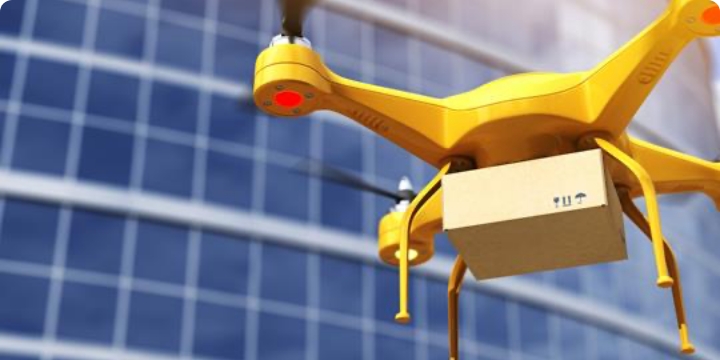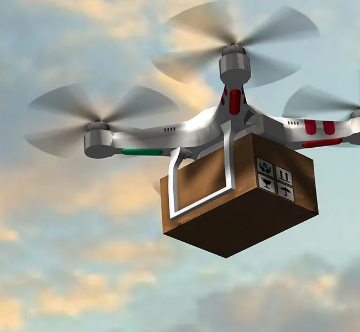The future of drone delivery
They seem to be everywhere you look – on the news, filming your favourite nature documentary, even whizzing around your neighbour’s garden. But will drones really be dropping off your next online purchase? JPGL’s Group Marketing Director, David McGrath, sat down with Business Voice Magazine to provide insight on the latest technology trend in the logistics industry.
So what is the current outlook for drones – and will we be seeing them on our doorsteps anytime soon?
I’m afraid that in the near future, probably not. At the moment, the big players in the field are all eCommerce organisations, notably Amazon in the US and Alibaba and JD in China. They are investing highly in drone development and logistics – with several ‘drone corridors’ being trialled around the world. Amazon has officially launched its drone service Amazon Air – but as far as we know, it has only actually delivered one parcel in the UK.

So what are the main obstacles to deploying drones more widely for deliveries?
There happen to be quite a few, unfortunately. Firstly, it could be quite physically dangerous to have a hoard of drones buzzing through the skies. It is shared air space, and drones aren’t currently regulated that specifically. This leads to a whole host of issues, from privacy and data capture to the fallout if they crash and damage property or injure someone. The control of the air space and regulation of drone use has a lot of catching up to do before companies could think about any widespread use. Amazon is trying to make this a reality; I believe they are the only company to have a permit for drone use in the US, but there is still a lot to do before it will be used at all regularly.
What about in a smaller jurisdiction like Jersey?
There happen to be quite a few, unfortunately. Firstly, it could be quite physically dangerous to have a hoard of drones buzzing through the skies. It is shared air space, and drones aren’t currently regulated that specifically. This leads to a whole host of issues, from privacy and data capture to the fallout if they crash and damage property or injure someone. The control of the air space and regulation of drone use has a lot of catching up to do before companies could think about any widespread use. Amazon is trying to make this a reality; I believe they are the only company to have a permit for drone use in the US, but there is still a lot to do before it will be used at all regularly.


Could drones save money in the long-term if more deliveries can be automated?
The tendency is to think that new technology and automation are always better. But with drones, it is not necessarily the case. At the moment, drones are extremely expensive bits of kit whilst they can only carry small items, weighing about five pounds or less for about 30 minutes – when the weather is good! The average value of the Amazon parcels we deliver is £7. We carry everything from bicycles to toilet rolls. A bike is too big for a drone, and a toilet roll too inexpensive to make it worthwhile. Taking this all into account, using drones just does not give us the reliability and economies of scale to make it work – our posties are definitely our future!
If drones aren’t flying into our future just yet, what technology are you investing in?
At the moment we are really looking at investing in people and technology that can help our people work more efficiently in real life. Our focus is on building a fantastic team to help us gather data and build real life models. We can then use these to test-drive solutions as realistically as possible before we roll them out on the ground. This means we can help give our people better solutions to real-world problems they encounter every day – helping everything run more smoothly and happily.